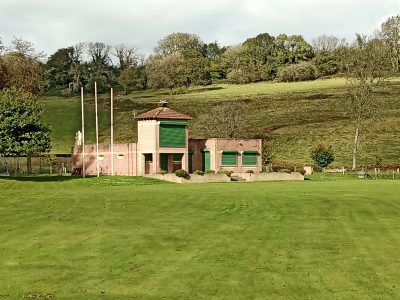Miskin Manor Cricket Club

The year 1882 is regarded as the year in which cricket was first played at Miskin Manor. The same field has been the venue for matches ever since. It was Rhys and Justin Williams who constructed the ground out of a hayfield.
During the 1914-18 World War cricket was discontinued at Miskin and it is believed the game was not resumed there until 1927-28. In the meantime, the manor house itself was almost totally destroyed by fire in 1922 and all the early cricket records were lost.
By the early 1930’s the Miskin Club had developed considerably. The ‘Miskin team’ had gained a formidable reputation but facilities were limited; changing and catering were accommodated in temporary tenting, while the scorers toiled in an old tollhouse purchased by Sir Rhys.
No cricket was played on the ground between the end of the 1939 season and the latter half of the 1946 season because most of the members were enlisted into H. M. Forces. Five of these members lost their lives while on active service.
The Club’s finances were extremely limited. However, members raised funds to erect a fitting memorial to their fallen friends. Sufficient funds were raised to build a pavilion which was in keeping with the picturesque setting of Miskin Manor and its immediate surroundings. This pavilion is still in use.
In 1948 the Club became affiliated to the Glamorgan County C. C. which led to the resumption of home fixtures with a representative County XI, an arrangement which continued well into the 1950’s.
The 1970’s opened with the Club making considerable financial outlay on extensions and modifications to the pavilion and general improvements to the ground.
An appeal fund was launched which led to the erection of a permanent scorebox. It was officially opened in August 1977 when Miskin entertained a team headed by Tony Lewis (former captain of both England and Glamorgan County CC.)
More information about the club and a more detailed history can be found at their website
For more information about the history of the community of Pontyclun please visit our online museum